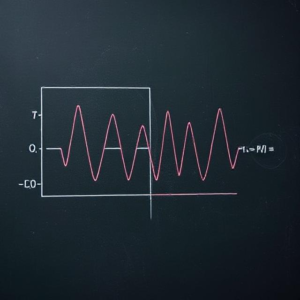In electrical engineering, especially when studying circuits, it’s essential to understand how a circuit behaves when it is suddenly switched on, off, or when a change occurs. This behavior over a short period is called transient behavior, and analyzing it is known as Transient Analysis. It helps engineers predict and control what happens in the moments just after a change.

What is Transient Analysis?
Transient Analysis is the study of a circuit’s response to changes in voltage or current, particularly during the time just after a change occurs (such as switching a circuit on or off). Unlike steady-state analysis, which looks at behavior after everything has settled, transient analysis focuses on that brief period when voltages and currents are still adjusting.
Why is it Important?
-
Helps design stable electronic systems.
-
Predicts voltage or current spikes.
-
Ensures components are not damaged during switching.
-
Critical for circuits with capacitors and inductors.
Basic Components Involved
1. Resistors (R)
Resistors oppose current. Their behavior doesn’t change with time, so they’re easy to handle in transient analysis.
2. Capacitors (C)
Store energy in an electric field. Voltage across a capacitor cannot change instantly.
Formula:
3. Inductors (L)
Store energy in a magnetic field. Current through an inductor cannot change instantly.
Formula:
Key Concepts in Transient Analysis
1. Initial Conditions
Before starting the analysis, we must know:
-
Initial voltage across a capacitor.
-
Initial current through an inductor.
2. Natural and Forced Response
-
Natural response: What the circuit does on its own (e.g., capacitor discharging).
-
Forced response: The effect of external sources (e.g., applying a battery).
3. Time Constant (τ)
Shows how fast the circuit responds.
-
For RC circuit:
-
For RL circuit:
A larger time constant means the circuit changes slowly.
Solving Simple Transient Circuits
1. RC Circuit (Step Response)
Imagine connecting a resistor and capacitor to a DC voltage source.
Equation:
This shows how the capacitor charges over time.
2. RL Circuit (Step Response)
For a resistor and inductor connected to a DC source:
Equation:
This shows how the current builds up in the inductor.
Easy Steps for Transient Analysis
-
Identify components (R, L, C).
-
Find initial conditions (before switch is closed/opened).
-
Replace capacitors and inductors with their initial equivalents:
-
Capacitor = voltage source (if initially charged).
-
Inductor = current source (if initially carrying current).
-
-
Use KVL/KCL or differential equations to find voltage or current.
-
Solve using standard forms (exponential solutions).
-
Plot response over time to visualize behavior.
Common Mistakes to Avoid
-
Ignoring initial conditions.
-
Assuming voltage/current changes instantly in C/L.
-
Forgetting to calculate time constant correctly.
Summary :
Transient Analysis helps us understand how circuits behave just after changes occur—before reaching a steady state. It’s especially important for circuits with capacitors and inductors. The key is to use initial conditions, apply the correct equations, and understand how time constants affect the response. Mastering this analysis allows engineers to design more reliable and efficient electronic systems.











